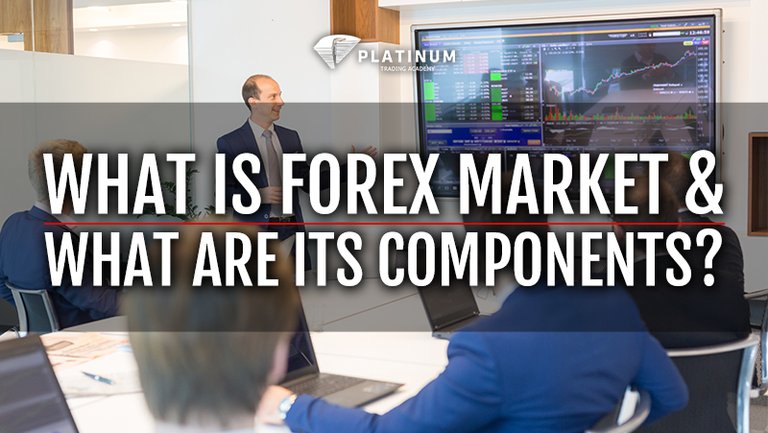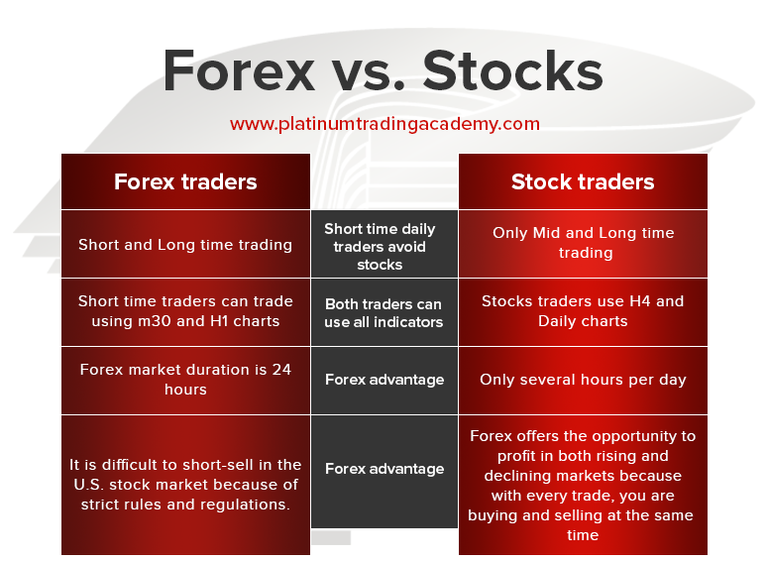
The Forex market is essentially a place where the trading of global currencies happens. In this market, currencies that belong to various countries will be bought and sold on a large scale. The Forex market can also be considered as a platform where large MNCs, international banks, and retail traders convert one currency to another. Unlike most of the other exchanges like the Chicago Board of Trade or the New York Stock Exchange, the Forex market is not centralized. It is maintained by global banks that belong to different countries across the globe.
One should be aware of the two different tiers of the global market – Interbank Market & Over-The-Counter (OTC) Market. In the Interbank market, international banks exchange currencies with each other in enormous volumes. Hence this market fundamentally dictates the price movements of currencies. But in the OTC market, global corporations and retail traders trade the currencies. This market has gained popularity with the advent of the internet, and many global corporations are willing to exchange money to pay their overseas employees. Also, retail trading has gained popularity as the ease of trading has increased with time.
The novice trader needs to know 'what is Forex' and all of its components. Traders should be well versed in the fundaments of the market before trading it. Hence, in the interest of our readers, we have presented all the basics of the Forex market in this article, which includes the size & liquidity, components, types, etc. Also, we have discussed the reasons why you should prefer trading the Forex market over other financial markets.
What Is Forex Market’s Size & Liquidity?
As discussed, the Forex market is decentralized as it doesn’t have any central exchange or physical location. For instance, the US Stock Market has the New York Stock Exchange, which is a real place where all the deals are done. The same is the case for Tokyo and London stock exchanges. But when it comes to Forex, the entire market is run by a network of banks, electronically. The transactions occur online, and traders get to speculate on the market 24/5 as long as they have an active internet connection (except for the weekends). These are some of the reasons that contribute to the Forex market’s high liquidity. The daily trading volume of the Forex on an average is whopping ~$5.3 Trillion. To put things in perspective, let’s see the below illustration.

The Average Daily Trading Volume Comparison - Forex Market vs. Different Stock Markets
The average daily trading volume of the US stock exchange NYSE (world’s largest stock exchange) is ~$23 billion, which is nowhere closer to $5.3 trillion. However, most of these five trillion dollars come from institutional traders and global companies. Retail traders contribute only 6% (~$300 BN) of the Forex’s daily trading volume.

Understanding Currency Pairs
Just like we trade stocks in the Stock Market, and commodities (metals, wheat, rice, oils, natural gas, etc.) in the Commodity Market, currencies of different countries are traded in the Forex Market. We always trade these currencies in pairs; i.e., one currency has to be sold to buy the desired currency. Let’s say you are travelling to the United States, and you are from London, U.K. Once you reach the US, you need US dollars to make any purchases. So you will have to convert your pounds to dollars and pay for those purchases. Ever observed any Foreign Exchange counters in the airports? This is where one can exchange their funds. People can also reach out to a Forex agent to make the conversions.
So basically, the point here is that when you want your desired currency (USD), you have sold the currency you had (GBP). This is the exact way how the currency pairs are traded in the market. But it doesn’t happen physically like in our example; it happens virtually, on the internet.
Now let’s understand the basic structure of a currency pair. Every single Forex pair will have a ‘Base’ currency and a ‘Quote’ currency. For instance, in the currency pair USD/JPY, USD is the base currency, and JPY is the quote currency. When you are activating a buy trade on this pair, you are essentially buying USD and selling Yen. It is vice-versa when you are activating a sell order on this pair.
What Is Forex Market’s Hierarchy?
By now, we know that retail traders are the least contributors to the Forex market. Then who are the major contributors? Let’s see. The hierarchy of the Forex market is given below based on their contribution to the Forex’s trading volume.
- International Government Banks & Large Commercial Banks
- Electronic Brokerage Services
- Medium - Small Sized Banks
- Retail ECNs
- Global MNCs
- Retail Traders
From the above grading, it is clear that the government banks and commercial banks are the most significant contributors to the Forex Market. These banks trade directly with each other in huge volumes, and hence they are referred to as the interbank market. Please note that the interbank market consists of small & medium-sized banks also and not just the government & large commercial banks. Then comes the retail ECNs and Global MNCs in terms of contribution to the Forex market’s trading volume. These multi-national companies and ECNs do not make transactions with government banks. Instead, they deal with commercial banks. Hence, the quote prices offered here are higher compared to the interbank market.
Then comes the retail Forex traders. These traders place their orders with their respective Forex brokers. The number of trades placed by them is extremely high, but the volume is very minimal compared to the other players on top of the hierarchy.
Types of Forex Markets
Do you know there are four different ways of trading the Forex market? Let’s understand each of the market types below.
Spot Market
In this market, currencies are purchased and sold based on their market price at that time. This price is referred to as the Current Market Price (CMP). The transactions in the Spot market are settled in cash, and they are based on CMP. Therefore, the spot market is also known as the cash or physical market. It takes about two days for the transactions to get settled in this market.
Futures Market
In the futures market, Forex trading in the form of contracts known as Future contracts. A futures contract is an obligation to buy or sell any particular asset in the near future at a pre-determined price (settled price). The profit or loss depends on how different the real effective price and the settled prices are on the date of expiry.
Options Market
In the Options Market, the buyer will have the right to buy/sell a Forex pair at the predefined price before the date of expiry. Please bear in mind that this is a right that the buyer has but not the obligation. To get this right, the option holder pays a premium to the option seller. There are two different types of currency options known as ‘Call’ and ‘Put.’
A Call option allows the buyer to buy a Forex pair while the Put Option allows the buyer to sell a currency pair. In both of these cases, the buying and selling happen at the strike price before the Option expiry date. This strike price is nothing but the price at which the option holders get to buy or sell the security when the option is implemented. These currency options are well known as they protect the traders from bearing huge losses.
Exchange-Traded Funds
Typically in an ETF, single or a bunch of currency pairs are clubbed. These ETFs are offered by different financial institutions and are presented to the public for purchasing them. In simple terms, the ETFs can be traded just like the shares on the stock market.
These are the different ways through which trades can participate in the Forex market.
Pros of Trading the Forex market
There are many advantages of trading the Forex market over any financial market. Relatively lower trading fee is one of the major reasons why traders prefer this market. A lot of fees that are involved in the stock market like clearing fees, brokerage fees, etc. can be eliminated while trading the Forex Market. Apart from the fee, High Liquidity, Leverage Trading, 24-Hour market, Variable Lot Sizes are some of the many pros that are involved while trading the Forex market.
That’s about the Forex market and its essential components. We hope you had a good read and got the answer to 'what is Forex market.' If you have any questions, let us know in the comments below.
Hopefully, you have enjoyed today’s article. Thanks for reading!
Have a fantastic day!
Nisha Patel
Live from the Platinum Trading Floor.